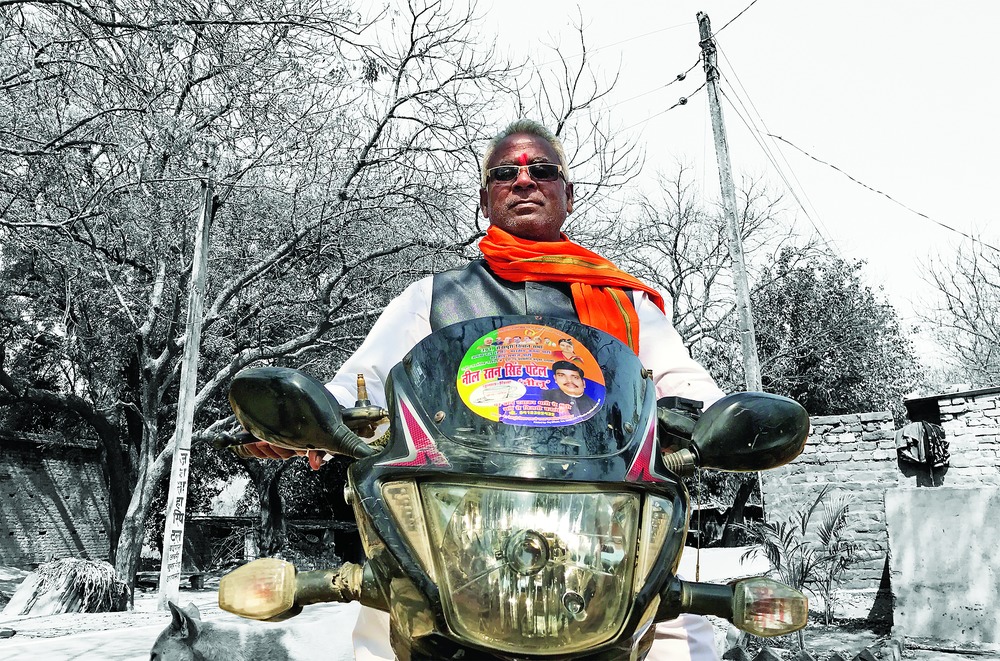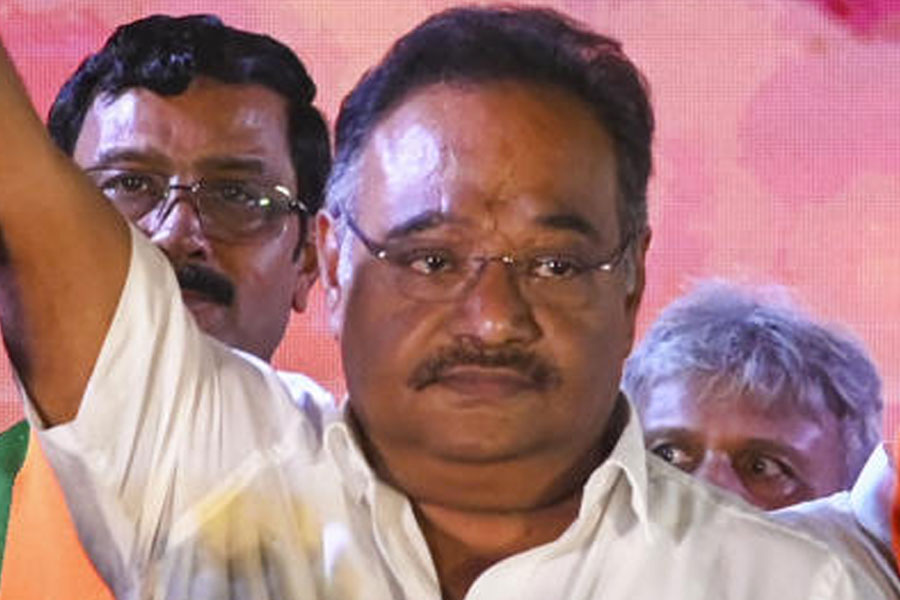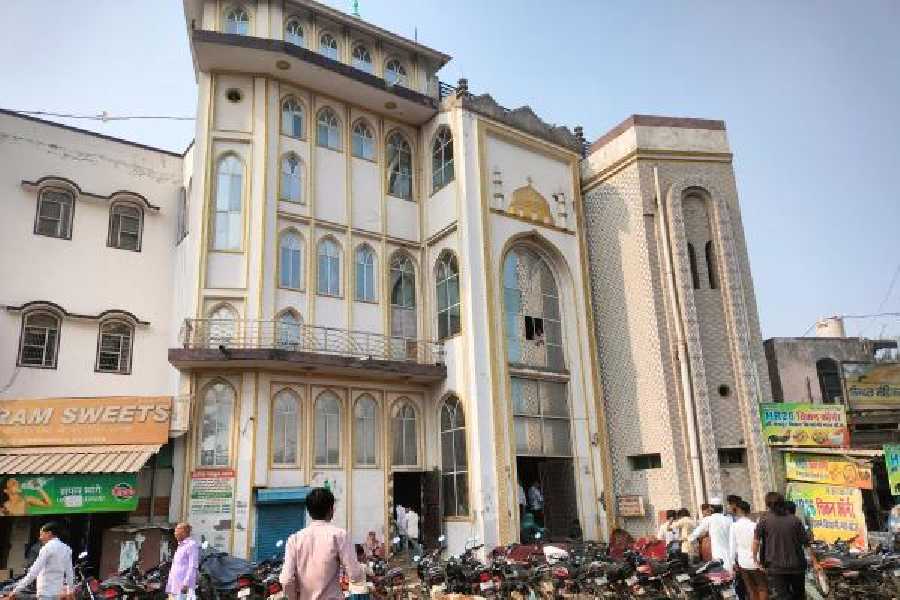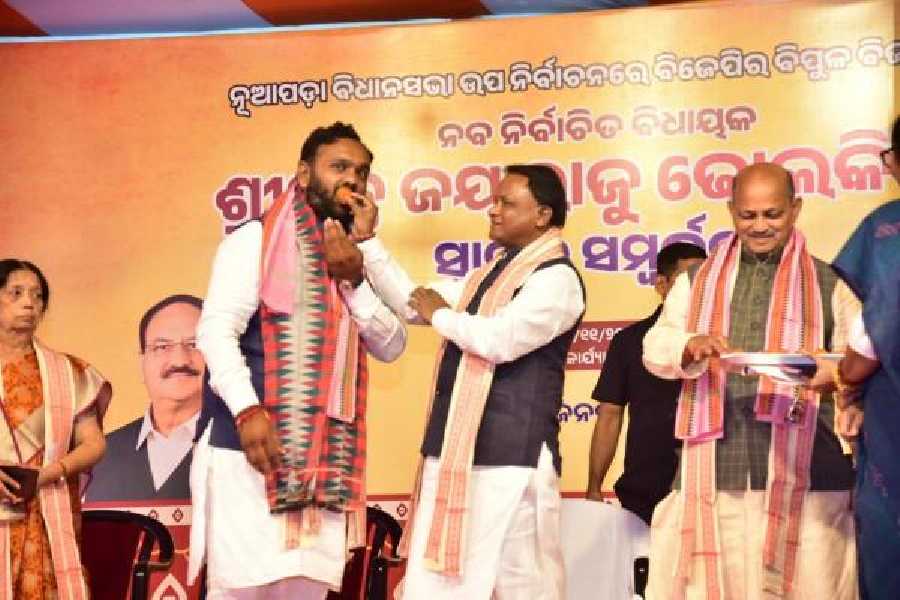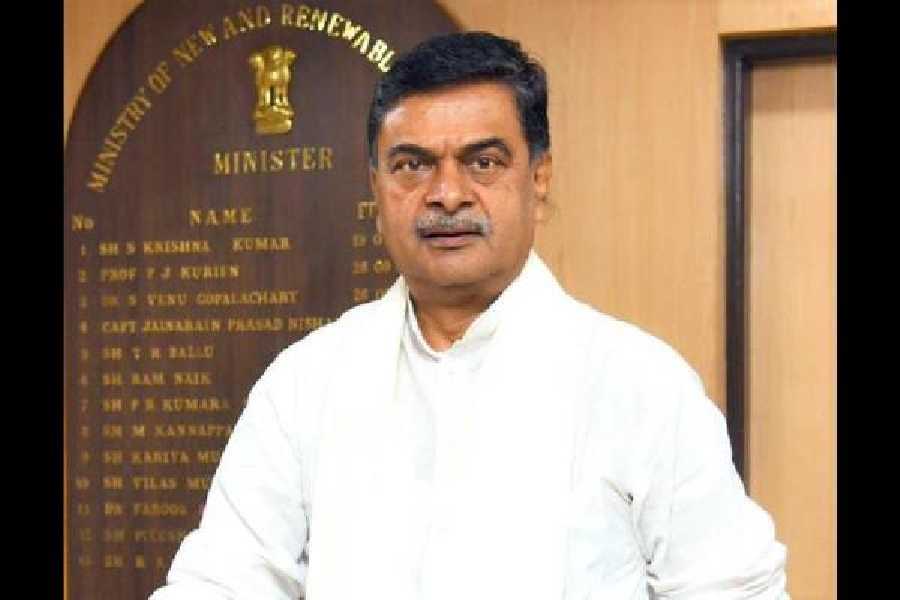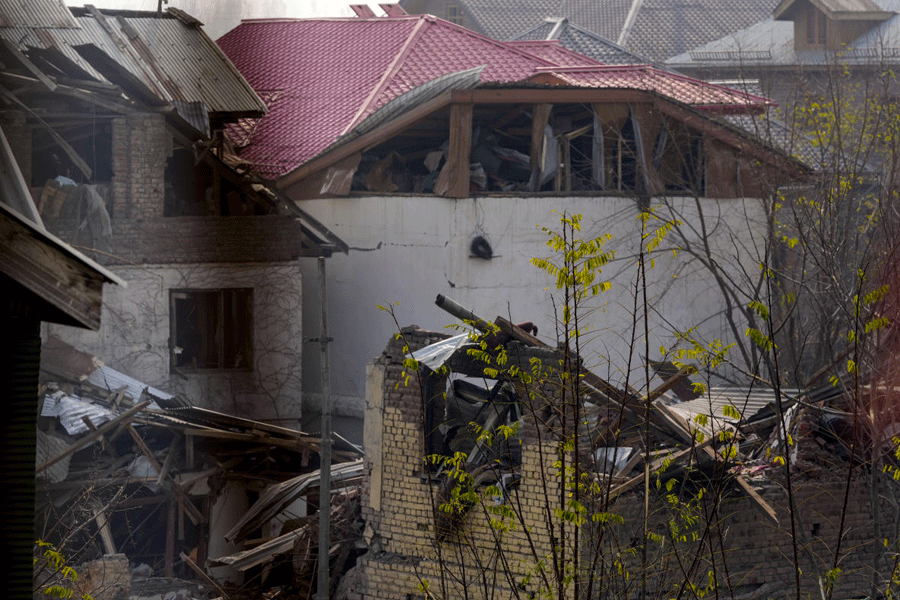
As our aircraft comes to a halt at its appointed slot and the doors are about to be slid open, the crew is taken by a panicked flurry. The cockpit commands the slides armed again, the passengers are ordered back to their seats and belted. The carrier begins to be tugged back towards the runway. What's happened?
A parking problem. Finance minister Arun Jaitley has rounded his campaign hop in Varanasi and is heading to Kathmandu on work. His jet has been left cramped in one corner, unable to manoeuvre a turnaround and take-off. We have to make way. There's no nudging space left or right on the tarmac, we must be pushed back. To one side, on the VVIP bay, is parked a fleet of ministerial Embraer executive flyers, to the other, a few Mi-8 Air Force choppers. The brigadiers in government have arrived in droves to camp along the trenches and marshal the troops - Rajnath Singh, Smriti Irani, Kalraj Mishra, J.P. Nadda, Ravi Shankar Prasad, Piyush Goyal, Santosh Gangwar, Anupriya Patel, to name just a few. Of the league of partymen led by boss Amit Shah, there's no count.
This is no ordinary time in Varanasi, Prime Minister Narendra Modi is fighting an election. Read no error here, read that again if you will: Prime Minister Narendra Modi is fighting an election. It is a vote for Modi, or against him, that will either deliver UP the BJP or distance it yet again. "For us this was always a big-picture campaign and that big picture is Narendra Modi," a Cabinet colleague of the Prime Minister stationed in Varanasi tells me. "Are we even bothered that we haven't told UP who their chief minister will be, or are the people of UP bothered? No, because this election is about one man and what he says and does: Narendra Modi."
When Ramgopal Mohley, the BJP mayor of Varanasi, sets about ramping up the campaign, he thinks ramping up Modi. More than a hundred huge Modi hoardings have gone up around town as this seven-phase election closes. Everywhere you look you meet Modi's vinyl stare: " Naa goondaraj, naa bhrashtachar, poorna bahumat ki Bhaajapa sarkar" - for a provincial election, a prime ministerial pledge.
But that is the Modi matrix, a patent designed to pitch him at the centre of the drama and the discourse, using, very often, his chosen adversary to cast his own role. As chief minister of Gujarat in 2002, he crafted a prime ministerial campaign for himself - he dismissed the Congress as too weak an opposition to bother fighting and made "Mian Musharraf" (Gen. Pervez Musharraf was then dictator-President of Pakistan) his chief opponent. It was a heated, divisive campaign coursing in the grim shadow of unfettered sectarian mayhem and murder on his watch. It was diabolically smart to have picked on Musharraf in that mood, it was a metaphor lost on none. His message was through and in the process Modi had also upscaled his stage - that Assembly election echoed around listening posts beyond Gujarat, even across the border in Pakistan. Modi became a man to watch. As Prime Minister since 2014, Modi hasn't hesitated to role play chief minister, embracing Assembly battles as his own, persisting with his pre-2014 campaign temper as if becoming Prime Minister wasn't the end of his mission: his is an empire project - Congress-mukt Bharat, Bhaajapa-yukt Bharat, the BJP footprint has to be expanded across India and UP is critical to that.
He came to UP undeterred by his failed investments in Delhi and Bihar. Heeding signals mid-campaign - was it the anxiety of possible defeat or the adrenaline-rush of a home run? - he more than doubled his battleground outings. It was he who drew the battle line, pointedly, cannily, unabashedly: kabristan-shmashan, the construct of an artful architect of fractures. Like his "Mian Musharraf" manoeuvre, the code for this one is a no-brainer. "When we have Modiji, why do we need anybody else?" Mohley chuckles with an I've-got-the-trump card grin.

If that's a meditated top-down strategy, it appears to have a bottom-up echo.
Jayapur lies 30 or so kilometres west of Varanasi, tucked two folds off the highway running to Allahabad. It's not signposted but it doesn't require to be. Since the Prime Minister adopted it as his own upon winning Varanasi in 2014, everybody in the vicinity knows the way to Jayapur, Modi ji ka gaon.
It's been pampered, the way rajas pamper their favoured among the riyaya, and it prides the reflected glow of the nation's VVIP Number One. A commodious passenger shed stands at the mouth of the village, its floors tiled, its roof high and emulsified, its benches made of glinting steel. Further down, there's an ATM, and two banks and a post office adjacent to it; in the distance, a new water tank looms from the wheat fields; there are, tucked into different village corners, a gaushala, an Anganwadi training centre for women, a sewing shed, two solar power stations, each able to generate 25 KVA; a scheme to supply drinking water to homes is in the works, or so the village hopes.
C.R. Patil, the BJP Lok Sabha member from Navsari in Gujarat, was the man tasked with ferrying the Santa bagful to Jayapur. But as often happens with one-time largesse, they've begun to suffer the wear of time and lack of attention. The water tank lies choked, some say it never became fully operational; battery packs have been purloined off many solar lamp posts; the bank computers are very often down; the road leading into Jayapur has collapsed to rubble, those tasked with making the road made money. "We were so pleased Modi ji adopted us, who wouldn't be?" says Triloki Singh, a resident farmer who also doubles up as a life insurance agent. "But what has happened since then is a sad story. You can see the state of the village, it is as if someone gave with one hand and took it away with another." There is enough to complain and rant about in Jayapur; it was handed broken baubles.
But here's where the Teflon begins to wrap itself around Modi. None of the blame for what has gone wrong or what was promised and not delivered is Modi's. "Modi ji is too tall a leader and too good a man to be responsible," Triloki Singh tells me further on in our conversation on his sun-baked front yard. "It is his local agents, people he put in charge. We cannot expect the Prime Minister to follow up affairs in a small village, he has higher responsibilities, woh to desh ki zimmedari vishwa bhar mein sambhaal rahe hain." But what is it about Modi that makes Triloki such a fanboy? " Woh mahaan hain, neta hain." (He is great, he is a leader.)
The 2014 rapture with Modi remains undiminished, and it's a rapture almost blank. Not many are able to credibly articulate what it is about Modi that makes him a thing of larger-than-life awe. The responses any inquiry into the magic of the Modi persona typically elicits are: badey neta hain, mahaan hain, charitravan hain, achchhey lagte hain, humko pasand hain, aadmi mein dum hai, bahut badhiya bolte hain... It's praise most folk don't find the need to explain; what do you say to "humko pasand hain"? Modi is a good enough recommendation for himself, it's because Modi is Modi.
The faith and name-worship is reminiscent to me of the campaign that brought the Emergency-stained Indira Gandhi booming back to power in 1980. The slogan that rang above all else in that election was: " Na jaat par, na paat par, Indiraji ki baat par, mohur lagegi haath par". Similar has turned the Modi charm, an ineffable and near-complete frame of supplication.
Narayan Patel, the pradhan of Jayapur, subscribes to the Apna Dal, a regional Kurmi formation allied to the BJP. He sets out each morning on his motorcycle, a one-man campaign party coughing dust in the countryside until it's night and there's nobody to canvass anymore. His energies are expended neither for the Apna Dal nor for the BJP. " Humko matlab hai Modiji se aur sirf Modiji se, aisa neta desh ko aajtak mila nahin, aur UP ko bhi Modiji chahiye." (I am concerned with Modi and him alone, the country hasn't ever had such a leader, and UP too needs Modi.)
We've met at a crossroads, Patel is heading off for a post-lunch round in some far corner of Sewapuri (the Assembly constituency of which Jayapur is a part). He's been tuned into the social media cross chat over donkeys that Akhilesh Yadav and Modi have tussled over. But he's unfazed, and willing to turn the joke on its head, find virtue in Modi's alleged vilification. " Ek baat bata doon saheb," he says, lavishing an extra lump of lime on his paan, " Allah meharbaan to gadha pehalwan. Yahi hain hamaarey Modiji." (If the Gods are benevolent, even an ass becomes an asset. Such is our Modi.)
***
As I write this, Modi has waded into Varanasi, popped straight as a meerkat through the sunroof of his flower-bedecked SUV, waving to crowds that seem to turn up like mice behind the Pied Piper of Hamelin.
As you read this, he'd have returned, for two more days of barnstorming in an around his constituency, the final two days of this long and most watched contest of the year. The parking spaces here are about to get a little more cramped.

